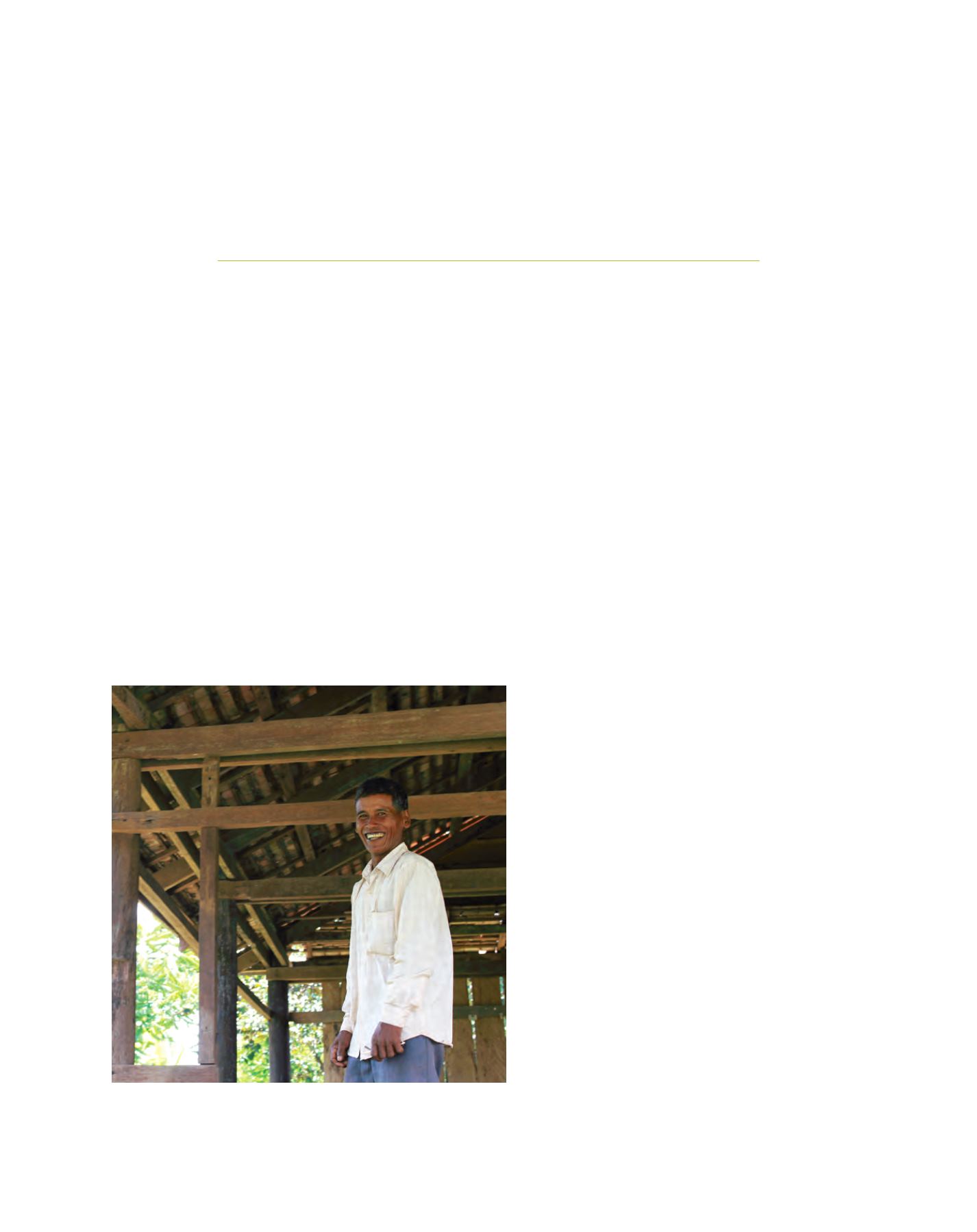

[
] 217
Voices of the forest:
building partnerships for
community forestry in Cambodia
Prabha Chandran, RECOFTC – The Center for People and Forests
W
e’ve depended on the forest for many generations.
If we don’t have legal rights, the forest will be lost.
Before we signed the [community forest] agreement,
we were always afraid that someone would take the trees and
destroy the forest. It took us almost three years, but the agree-
ment we have now means nobody can change the area and
outsiders cannot invest and take away our forest. We can keep
using it as we have traditionally.” (Mr Sorn Yam, Chairperson,
Community Forest Management Committee, Kbal O KraNhak,
Kampong Thom, Cambodia)
It’s a fight that’s been fought by local communities living in and
around forests across the world and it’s becoming more urgent as
rapid urbanization, compounded by food and fuel shortages, puts
daily pressure on forests. Yet, as the villagers of Kbal O KraNhak
discovered, it was possible to reclaim forests and assert
traditional rights – but only after a logging concession
had virtually destroyed their habitat. From 1996 their
forest lands were controlled by a logging company,
whose licence was revoked in 2001 following wide-
spread illegal activities. By then, the forest had been
largely destroyed and along with it, the livelihoods of
those in Kampong Thom – especially their traditional
trade of resin collection.
An environmental, social and economic disaster
On a national scale, more than half of Cambodia’s forest
land, nearly 7 million out of 10.8 million hectares,
was licensed to 33 companies via logging concessions
in the 1990s. The government believed these conces-
sions would generate much-needed revenues of US$100
million annually. Instead, by 1997, it was estimated that
four million cubic metres of illegal timber was pilfered
each year – ten times what could be taken sustainably –
causing a loss of US$60 million to the national treasury.
1
One of the poorest countries in the region, Cambodia
was recovering from almost three decades of civil war
and social upheaval. Poor governance, weak institu-
tions and law enforcement following the Khmer Rouge’s
exploitive policies had decimated the country’s primary
rainforest cover from 70 per cent in 1969 to 31 per cent,
in less than 40 years
2
. The conclusion from a number of
reviews
3
was that Government control of logging opera-
tions was ineffectual and might jeopardize long-term
economic growth and poverty reduction.
In response, the Government of Cambodia declared a
logging moratorium in 2002. However, economic growth
continues to draw heavily on the country’s natural
resources with investment in large-scale agriculture and
rubber plantations posing a growing threat. The loss of
forest cover has also exacerbated the poverty of millions
of rural families like Mr Sorn Yams’, who depend on local
forests for food, medicine, shelter and fuelwood.
Research shows that nearly half of Cambodia’s rural
households – more than five million people – rely
on forests for 20-50 per cent of their livelihood. For
another one million people, forests provide over half
of their livelihood.
4
Faced with a critical situation at
“
Sorn Yam, Chairperson of the Community Forest Management Committee, worked
for three years through six stages of approval to get legal recognition “otherwise the
forest will be lost”
Image: Alison Rohrs, RECOFTC
















